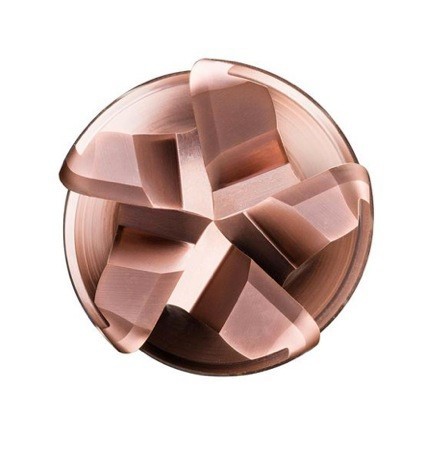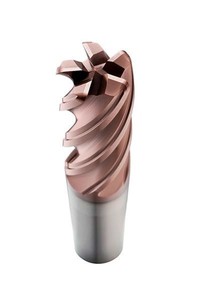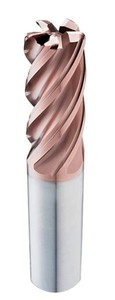

|
Edward Lowton
Editor |


|
| Home> | Production Engineering | >Machine centres and tools | >Five-flute roughing end mills |
Five-flute roughing end mills
27 August 2015
SGS Tool Europe's new Z-Carb HPR five-flute roughing end mills are well suited to aggressive high speed roughing and finishing machining applications.

The company says the specialised five-flute design is engineered for increased productivity compared to three- and four-flute end mills resulting in high metal removal during the machining process and subsequently reduced cycle times.
Using SGS variable indexing geometry to provide improved chatter suppression over symmetrical designs, the Z-Carb HPR is available in a variety of lengths, with square, and corner radius options, and is available with Ti-Namite-M heat resilient coating for superior performance in difficult to machine materials such as titanium. With a hardness value of 3600 (HV) features of the advanced coating include high wear resistance, reduced friction with a coefficient of friction of just 0.45, an oxidation temperate of 1150°C and excellent prevention of cutting edge build-up.
Enhanced cutting performance will be of key interest to companies working in aerospace, automotive, mould and die, energy, medical and general precision engineering. In fact any sector looking to achieve high performance titanium machining especially applications with deep pocketing and aggressive ramping.
Designed using the latest FEA software the cutting force and torque are reduced by more than 10% due to the patent-pending variable design of the Z-Carb HPR which improves shearing capability and tool life. Specially designed for the five-flute tool the radial rake balances positive cutting action and edge strength, while the end grind features include a positive axial rake for improved shearing and lifting of material and increased clearances to eliminate edge build-up during ramping.
Engineered for strength, chip evacuation, and increased productivity over three- and four-flute end mills the specialised five-flute design offers a performance increase of between 20 and 40%. The variable flute pattern provides efficient chatter suppression over a range of spindle speeds while the open centre design delivers efficiency during entry movements into the workpiece. The helix angle has been engineered for balance between positive cutting action and reduced contact area to control tool pressure and spindle load.



















